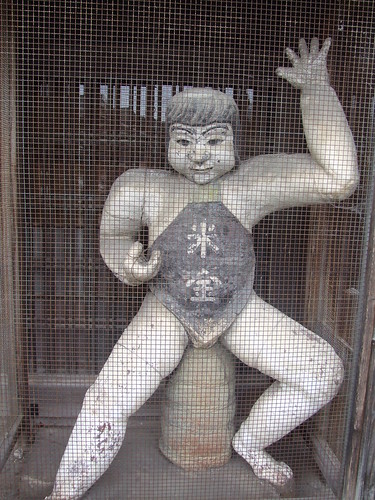
I believe in Esoteric Buddhism as much as I believe in anything that I don't believe in. I don't even find Buddhism very interesting. I think it is tedious and soporific and silly. It resists absorption by my brain as if it were mathematics. However- It was always coming wasn't it-However, Buddhism, Esoteric Buddhism in particular got a few things right: It conducts business on a human scale. It is accessible to you in your body as a human. Maybe that is why ancient Buddhism did architecture so well. It's buildings are often large, to be sure-grand even- but they are large to us as humans, not unfathomable. The World Trade Center, to use an unfortunate example, was about as bad as buildings can be. Terrible. Forced. Todaiji on the other hand: magnificent. Resplendent. Great.
That is why when I found myself going to Koyasan over Silver Week I decided to approach it as a human should, in the footsteps of Kukai (空海), ascending the 6 hours of worn trail into the mountains known as the Choishimichi (町石道). For those not in the know a Cho 町 is the ancient Japanese measurement that is around 109 meters. This path to Koyasan is composed of 180 stone markers marking one cho. Most people these days go by cable car or drive on the roads. Is it too self-righteous of me to shake my head at those who will weekend at a holy retreat by starting and ending in a parking lot? Has self-righteousness aver stopped me before?
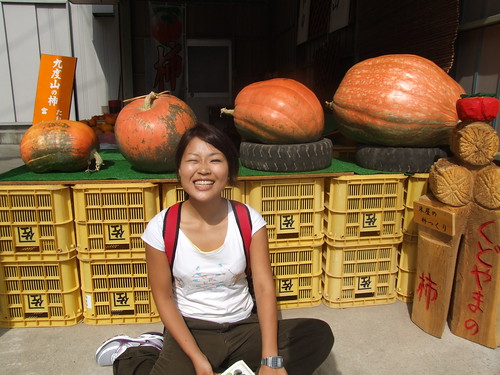
I took on the journey with Natsuki and Eri who, while far more Japanese than me, are about as esoteric as a new washing machine expo. Yet both might be considered intrepid. Many pilgrims begin their circuit of Shikkoku with a visit to Koyasan. Although there were many Ohenrosan on the train, none got off at Kudoyama station with us. Japanese maps and signs are notoriusly spotty- brief aside, not only did the map at the station not orient to north, the inset of the map pointed in yet another direction- so we made our way downhill, to cross the river and begin at Jison-in, a UNESCO World Heritage site. It was being attacked by pumpkins.
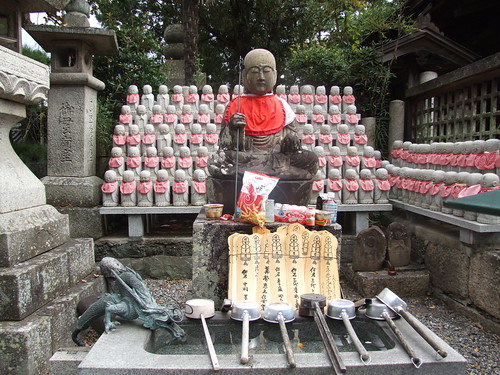

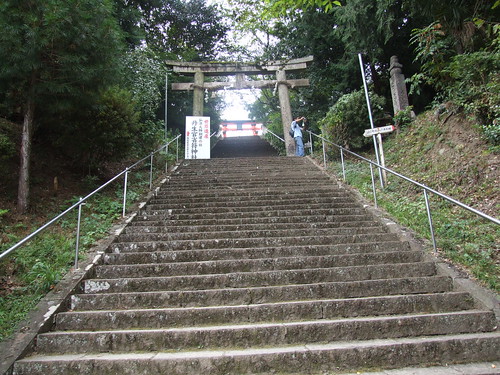
This is stone 180 and the stais leading to it from the back of the shrine. This will be the rate of climb for about the next hour up the mountain.

But then there you are in a kaki field towering over Wakayama while the smell of whale bacon simmers in a wooden kitchen somewhere.
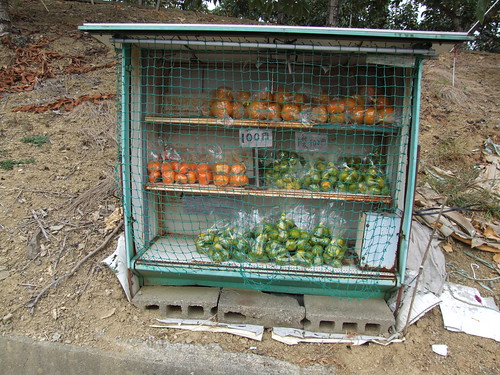
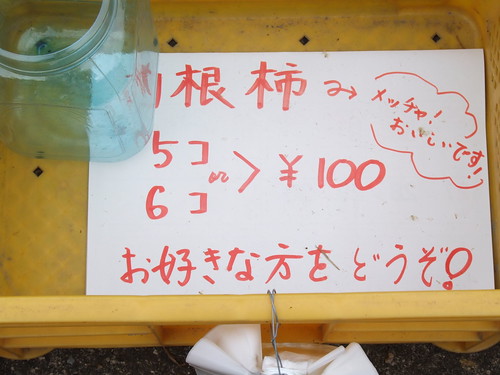

The great thing about hiking in the fall is that farmers leave buckets of fruits everywhere and charge about a dollar for bags of them. In this case you can take 5 or 6 kaki for 100 yen. Why 5 or 6? I don't know. I wouldn't have packed a lunch had I known though, as these were excellent.
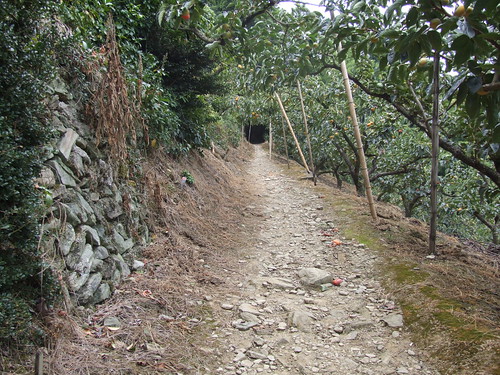
Ascending from the kaki fields the trail gets more enclosed and very Lord of the Rings. The forest isn't old growth, but the trail is very old. It was laid down in the 800s. The stone markers replaced wooden markers in the Heian Period.
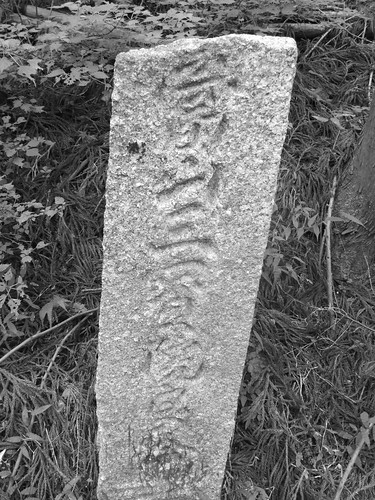

And as we entered Mordor.
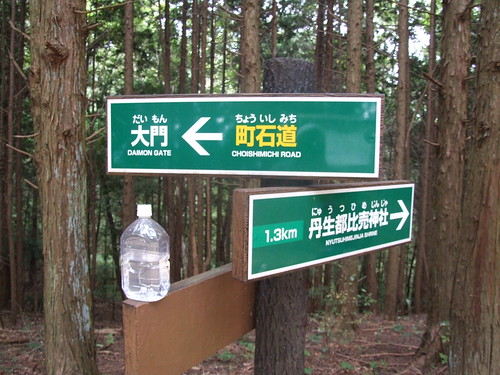
The trail is very well marked. It would be very hard to get lost. One small draw back to the natural setting is that a large golf course borders the trail for an hour or two half way in. As we approached it, we exclaimed, "Wow, nature is so green! No! It's a golf course." Shame.
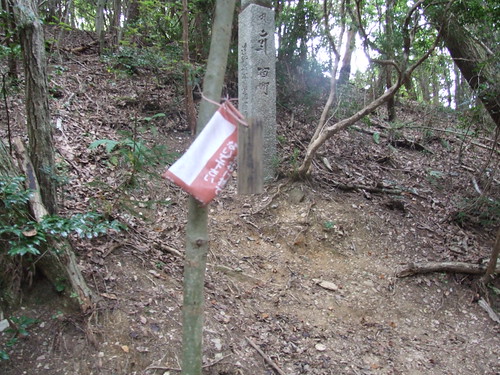
Marker 100.

A remnant of a pilgrimage.
The frequnecy of pictures drop off a bit here because it started to rain on us about 5 hours in. This was after encountering a suprising bluff, a snake, a dead mole, and paralleling a noisy road that is rather distracting. There was also a strange grove of palm trees.

About an hour or two from the goal, you cross a large intersection. This is where you realize you didn't need to pack any food and that you resent cars. There is also a bathroom here. Out of the intersection is the steepest climb of the hike. It doesn't last long though. There are huge ceder trees and a bunch of rocks from Japanese mythology. I put my camera away so it wouldn't get wet.
The very end of the hike is a steep series of switchback leading up to the Daimon (大門) which, true to the kanji, is very large. Here the road makes a hairpin turn in front of the gate that faces you, the hiker. As the young priest at the temple where we stayed rightly said, "If you come here in a car, you have no idea why the gate faces that way." I have been pretty consistent since my days as an urban planning undergrad in insisting that some places should be hard to get to, and not every experience should be made easy. I am being an ass, but an accurate one, when I say that people that tell me that they have been to Koyasan but haven't made the hike there, haven't been to Koyasan.
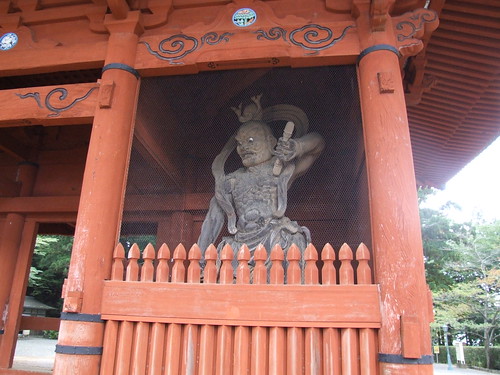
1 comment:
Wes, thanks so much for sharing. As usual, your pictures are incredible! Miss you both-
Post a Comment